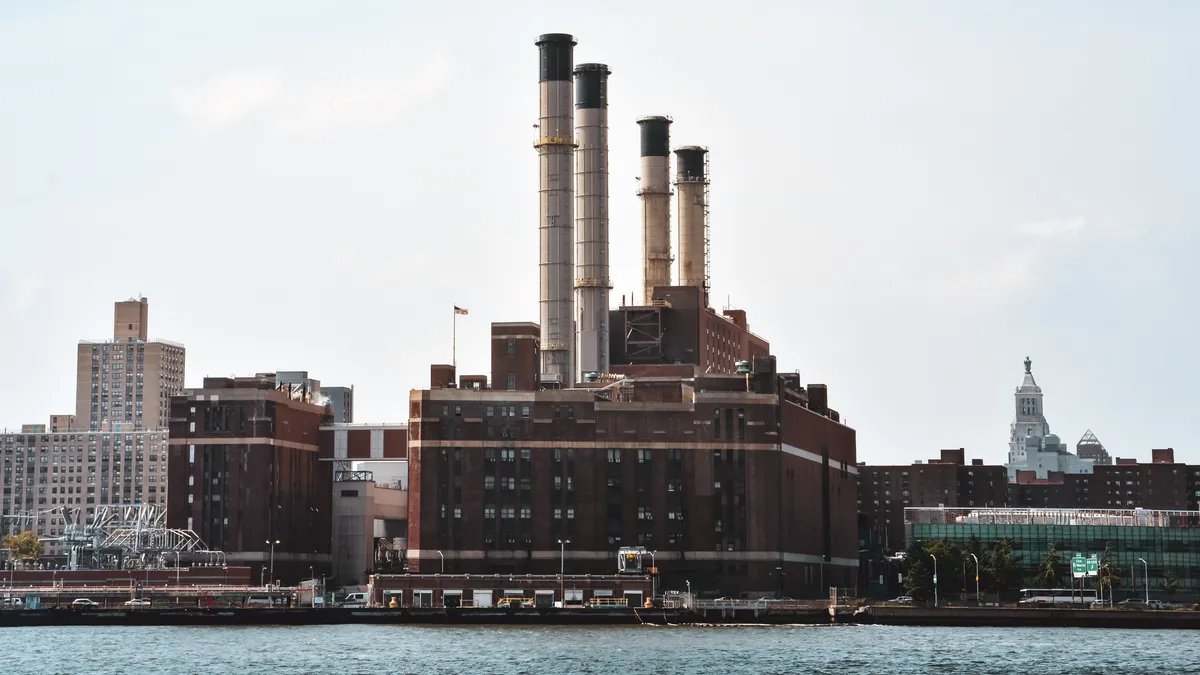Dive Brief:
- To support industrial jobs, strengthen supply chains and spur green manufacturing, eight New York City council members are calling for the modernization of city industrial zoning rules they say are outdated.
- The bill introduced in late April would require the departments of City Planning and Small Business Services and the Economic Development Corp. to complete an “industrial development action plan” for industrial business zones every five years starting no later than Oct. 1, 2024.
- “This is a moment for New York City to be ahead of the curve and lead on an issue our president has made a priority for this country,” said the bill’s prime sponsor, Council member Amanda Farías, at an April 25 press conference, referring to the hundreds of billions of dollars the Biden administration is investing in U.S. industry.
Dive Insight:
It’s been six decades since the city has made significant changes to industrial zoning, Council member Jennifer Gutiérrez said at the press conference. Currently, many of the city’s “light industrial zones” allow uses such as restaurants, clubs, other nightlife and retail, which “ultimately sort of threatens the stability of these industrial zones,” said Paula Crespo, senior planner at the nonprofit Pratt Center for Community Development, in an interview. “A landlord sees that his neighbor is renting out his warehouse space to a nightclub and making tons of money,” she said. “So, he might want to do the same thing.”
Crespo has heard from those who work closely with manufacturers that they are concerned the council members’ action plan will be logistically difficult to pull off given its proposed scope and level of detail.
The bill specifies the plan would include an overview of city policies to grow the industrial sector and provide data on industrial sector economic trends, employment, land use, construction permits and zoning, as well as analysis of environmental conditions such as sea-level rise vulnerability, air quality and urban heat island effect.
For each industrial business zone, the plan would propose a land-use framework as well as identify economic development goals and priority infrastructure capital investments. It would also create a workforce development and local hiring strategy with targets for local businesses, minority- and women-owned businesses and emerging businesses. The city departments involved would regularly make recommendations to the mayor and speaker of the council.
At the press conference, council members emphasized the employment opportunities in the manufacturing sector. Many manufacturing jobs don’t require advanced degrees and provide higher average pay than that available in the service sector, they said, and a sign displayed at the press conference noted New York City’s industrial workforce is more than 80% people of color and 50% immigrants.
Greenpoint Manufacturing and Design Center CEO Brian Coleman noted at the press conference that he’s “been doing this a long time. It’s the first time I’ve stood shoulder-to-shoulder with so many council people that are here to support the manufacturing sector.” He continued, “We’ve been in the back of the room for a very long time.”
The long-overlooked industrial zones could be a boon for the city as the clean energy transition necessitates manufacturing components such as batteries, Council member Lincoln Restler said at the press conference. “Where is the future of battery hubs in New York City? They’re in our [industrial business zones],” he said.
Council member Sandy Nurse, also at the press conference, pushed back against the idea that the U.S. manufacturing sector is or will be obsolete, calling that thinking a lack of vision and planning.
Although the U.S. is “way past our heyday of manufacturing,” with many jobs going overseas, it makes sense for cities to encourage manufacturing such as building materials and food, the Pratt Center’s Crespo said. “Building materials, for environmental and other reasons, we shouldn't be making those far away from where they're ultimately going to be used,” she said.












